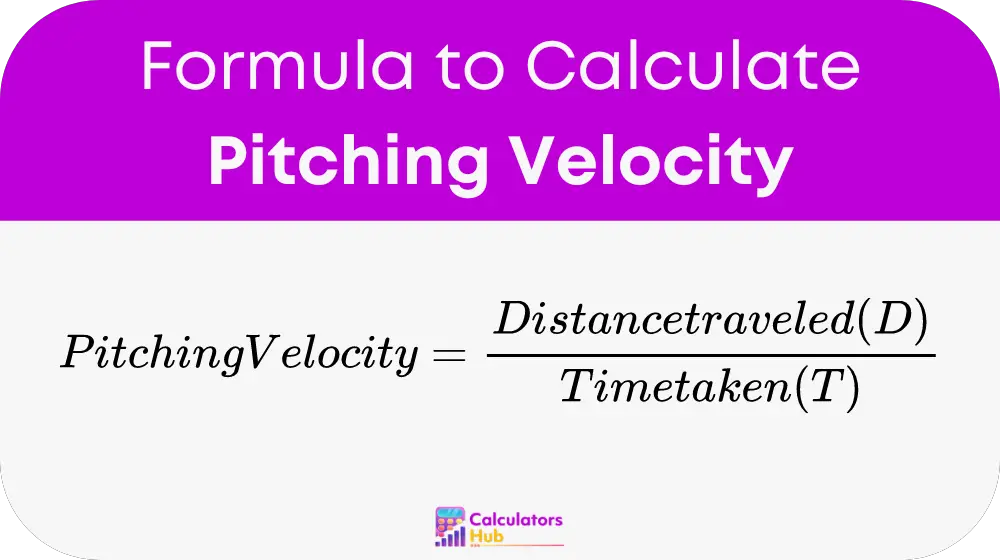The Pitching Velocity Calculator is an essential tool for anyone involved in baseball, from amateur players to professional coaches. It provides a precise measure of how fast a pitch travels from the pitcher's hand to the catcher's mitt, allowing for more informed decisions about player development and game tactics.
The Formula of Pitching Velocity Calculator
The fundamental formula used by the Pitching Velocity Calculator is quite straightforward:

Here's a deeper look at the components:
- V: This is the pitching velocity, measured in miles per hour (mph).
- D: Represents the distance the baseball travels, usually the standard pitching distance from the mound to home plate, measured in feet.
- T: This is the time it takes for the ball to cover that distance, recorded in seconds.
Useful Conversion Table
To enhance your usage of the Pitching Velocity Calculator, here's a table featuring common conversions and calculations:
| Distance in Feet (D) | Time in Seconds (T) | Pitching Velocity (mph) |
|---|---|---|
| 60.5 | 0.4 | 151.25 |
| 60.5 | 0.5 | 121.00 |
| 60.5 | 0.6 | 100.83 |
This table can be used to quickly estimate pitching velocity without manual calculations, aiding in efficient training and gameplay adjustments.
Example of Pitching Velocity Calculator
Let's consider a practical example. If a pitcher throws a ball that travels the standard 60.5 feet in 0.45 seconds, using our formula: Pitching velocity = 60.5 feet / 0.45 seconds ≈ 134.44 mph
This quick calculation shows how the calculator can be used in real training scenarios to gauge performance improvements.
Most Common FAQs
Average velocities vary widely, typically increasing with age and experience from around 40 mph in young children to over 90 mph in professional adults.
Improvement comes from strength training, proper mechanics, and consistent practice. Tools like the Pitching Velocity Calculator help track progress and refine techniques.
Yes, several apps integrate this formula, providing real-time calculations and feedback during practice sessions.